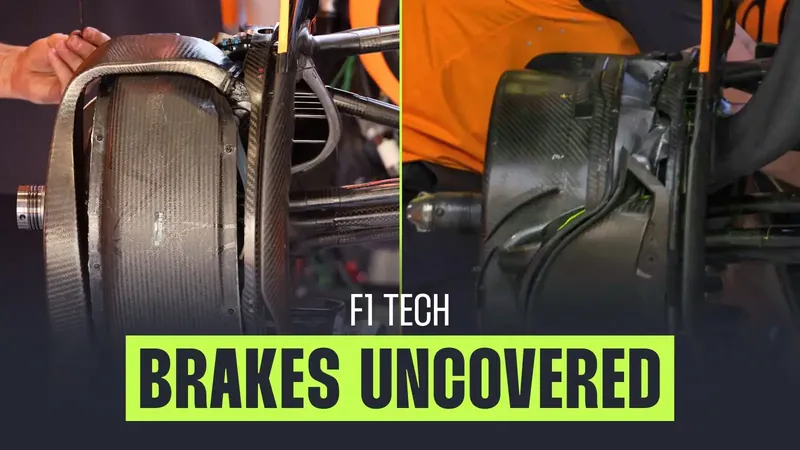
McLaren's MCL39: Unveiling the Secrets of a Revolutionary Brake Duct Design!
2025-03-29
Author: Jia
As the new Formula 1 season kicks off, one hot topic among racing teams is the introduction of Pirelli's new tyre specifications for 2025. These tyres are known for their temperature sensitivity, which presents significant challenges and opportunities for teams trying to maximize performance.
While the driver’s skill is often the focus in managing tyre temperatures during a race, the design and performance of the brake assemblies play a crucial role. Not only do brakes serve the essential purpose of slowing down the car, but they also influence the thermal dynamics between the brake drum and the wheel rim, subsequently affecting the tyre temperatures.
With the current generation of F1 cars, several regulations have changed the way teams can manage aerodynamics and thermal efficiency. The switch from 13-inch to 18-inch wheel rims has increased the size of brake discs — by approximately 50mm at the front and 10mm at the rear — requiring teams to redesign their brake calipers and assemblies.
McLaren, known for its innovative engineering, has adapted to these changes with a keen focus on efficiency. In response to the larger brake assembly spaces, they introduced a custom fairing that encases the brake discs. This fairing optimizes the flow of cool air directed towards the brake components, ensuring that heat generated during braking is efficiently managed and that thermal interactions with the wheel rim are advantageous for overall tyre performance.
This season, McLaren revealed a redesigned brake duct configuration on their MCL39. Unlike last season’s MCL38, which utilized a dual-track S-shaped ducting system, the MCL39 opts for a more streamlined approach with direct airflow to the calipers. This modification aims to stabilize the temperature distribution between the brake components and the wheel rims, potentially leading to enhanced tyre performance and longevity.
Interestingly, their new arrangement brings a nostalgic touch to designs used before the recent regulations were introduced, echoing features seen in the MCL35M. Various channels and baffles have been strategically integrated into the brake drum assembly to ensure optimal heat distribution, a critical factor given the new mandated sealed outer drum design that prevents easy heat expulsion.
While McLaren has made significant strides in optimally managing brake duct configurations, they are not alone. Every competing team has been innovating and enhancing their designs to adapt to the regulations and improve their competitive edge. With teams continuously optimizing their cars throughout the season, the quest for better thermal management remains a pivotal focus in Formula 1’s relentless pursuit of speed.
As fans gear up for the new season, the innovations within the MCL39 will undoubtedly be a point of intrigue, showcasing how crucial these technical advancements are in the fast-paced world of F1 racing. But that’s not all! Stay tuned as we uncover more secrets from behind the pit walls this season!





 Brasil (PT)
Brasil (PT)
 Canada (EN)
Canada (EN)
 Chile (ES)
Chile (ES)
 Česko (CS)
Česko (CS)
 대한민국 (KO)
대한민국 (KO)
 España (ES)
España (ES)
 France (FR)
France (FR)
 Hong Kong (EN)
Hong Kong (EN)
 Italia (IT)
Italia (IT)
 日本 (JA)
日本 (JA)
 Magyarország (HU)
Magyarország (HU)
 Norge (NO)
Norge (NO)
 Polska (PL)
Polska (PL)
 Schweiz (DE)
Schweiz (DE)
 Singapore (EN)
Singapore (EN)
 Sverige (SV)
Sverige (SV)
 Suomi (FI)
Suomi (FI)
 Türkiye (TR)
Türkiye (TR)
 الإمارات العربية المتحدة (AR)
الإمارات العربية المتحدة (AR)